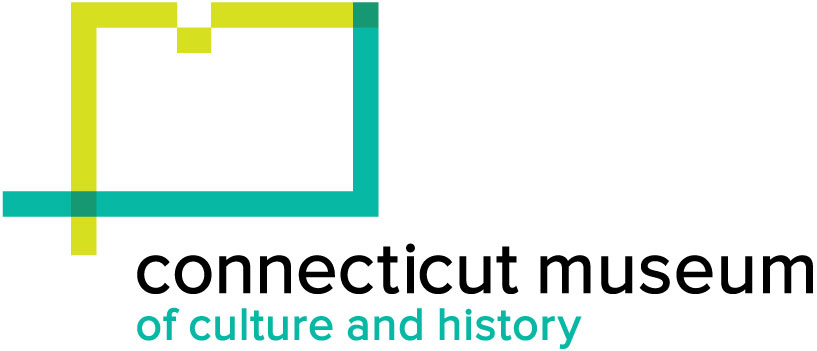1 of 1
Interview with Marcia L. Hincks
IntervieweeInterview with
Marcia L. Hincks
American, born 1935
InterviewerInterviewed by
Stephen B. Middlebrook
American
Date2005 November 15
ClassificationsGraphics
Credit LineGift of the Connecticut Bar Foundation
DescriptionOral history interview with Marcia L. Hincks who was interviewed by Stephen B. Middlebrook on November 15, 2005 for the Connecticut Bar Foundation's History of Connecticut Women in the Legal Profession Project.
Topics Discussed:
- Early Life: Marcia Hincks was born in July 1935 in New York City. Her father, a surgeon, held positions at Columbia, University of Pennsylvania, and Yale, leading to family moves between New Jersey, Philadelphia, and New Haven. Her mother, who did volunteer work, later became director of admissions at the private girls' school Marcia attended.
- College Education: Marcia attended Bryn Mawr College. She initially aimed for pre-med but shifted to political science after struggling with biology.
- Interest in Law: Her interest in law developed from a constitutional law course taught by Peter Bacharach, and she also took an international law course with Gertrude Leighton. She wrote her senior honors thesis on Justice Black, whom she interviewed.
- Law School Experience: She chose Yale Law School due to its welcoming environment for women, preferring it over Harvard. She also applied to Columbia and the University of Chicago, but Yale offered scholarships and loans. Her class had seven women.
- Marriage and Family: Marcia met her husband, John, during her second year of law school. They got engaged around November and married the following June. They intended to work part-time and settled in West Hartford. She began looking for part-time work after her second child was born.
- Insurance Work: In December 1961, she joined Aetna in a general counsel position, having considered Legal Aid and government jobs. She left in the spring of 1964. She returned to Aetna in the fall of 1967 as a part-timer and later specialized in tax law, eventually focusing on product-related legal work for life insurance.
- Children and Grandchildren.
Topics Discussed:
- Early Life: Marcia Hincks was born in July 1935 in New York City. Her father, a surgeon, held positions at Columbia, University of Pennsylvania, and Yale, leading to family moves between New Jersey, Philadelphia, and New Haven. Her mother, who did volunteer work, later became director of admissions at the private girls' school Marcia attended.
- College Education: Marcia attended Bryn Mawr College. She initially aimed for pre-med but shifted to political science after struggling with biology.
- Interest in Law: Her interest in law developed from a constitutional law course taught by Peter Bacharach, and she also took an international law course with Gertrude Leighton. She wrote her senior honors thesis on Justice Black, whom she interviewed.
- Law School Experience: She chose Yale Law School due to its welcoming environment for women, preferring it over Harvard. She also applied to Columbia and the University of Chicago, but Yale offered scholarships and loans. Her class had seven women.
- Marriage and Family: Marcia met her husband, John, during her second year of law school. They got engaged around November and married the following June. They intended to work part-time and settled in West Hartford. She began looking for part-time work after her second child was born.
- Insurance Work: In December 1961, she joined Aetna in a general counsel position, having considered Legal Aid and government jobs. She left in the spring of 1964. She returned to Aetna in the fall of 1967 as a part-timer and later specialized in tax law, eventually focusing on product-related legal work for life insurance.
- Children and Grandchildren.
Object number2024.38.27a-e
NotesProject Overview: At the turn of the 20th century, other than Mary Hall, women lawyers were virtually unknown in Connecticut. By contrast, at the turn of the 21st century, law schools were enrolling roughly the same number of women as men. Since their earliest time at the bar, women have become leaders in all areas of the profession at a pace out of all proportion to their brief history and number. In 1999, the Fellows of the Connecticut Bar Foundation initiated the Oral History of Connecticut Women in the Legal Profession Project. Within the framework of this dynamic project, the Fellows have been creating a permanent video, audio, and photographic historical record of milestone achievements of women as they have become more visible and achieved prominence in the field of law. In 2019, a leadership donation of $20,000 from the law firm of Carmody Torrance Sandak & Hennessey enabled the project to significantly broaden its scope and plan for the future.
Through its first two phases, the project worked with award-winning documentarian Karyl Evans and attorney/photographer Isabel Chenoweth to produce fifty-eight oral history interviews with outstanding female attorneys and 118 portraits of women in the Connecticut judiciary.
The oral history interviews have collected the stories of women whose ingenuity, perseverance, and intelligence dismantled barriers that historically prevented women from pursuing careers in the law. Connecticut has benefited from the efforts of these “pioneers” as they enriched the legal profession by joining the ranks of their male peers and paved the way for more women to join the profession. (Source: Connecticut Bar Foundation)
Subject Terms
- Women
- Lawyers
- Women lawyers
- Oral history
- Interview films
- Interview transcripts
- Interviews
- Oral narratives
- Attorneys
- New York (N.Y.)
- Physicians
- Philadelphia (Pa.)
- Yale University
- New Haven (Conn.)
- Law schools
- Hartford (Conn.)
- Insurance companies
- Aetna Life Insurance Company (Hartford, Conn.)
- Public health
- Family
- AIDS (Disease)
- Education
- Children
- Marriage
- Motherhood
- Grandparents and grandchildren
- Interviews and Oral Histories
- History of Connecticut Women in the Legal Profession Project
On View
Not on view